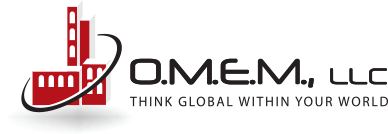Many small business owners are working hard to manage the organization to the best of their abilities. Often times this process of learning to run a business is based on experience first and education second. By this I mean the education and knowledge for owning, managing, and running a business comes from personal experiences of being inside a similar operation in the past as opposed to gaining the education first. While I tend to see this primarily in the small business world, larger organizations tend to require the education first and experience second. In days gone by, this was not the case, but in todays world it is becoming more and more a requirement in large organizations. So, as a small business owner, can you get by without formal education? Yes, but depending on the business, it may be harder and require a substantial amount more of effort to succeed. This is not to say newly started small business owners struggle to succeed. IT is to say, however, that many small business owners tend to work harder for growth as they learn the ropes of being in business for themselves.
As I read through many business publications I routinely read about small business owners who are doing very well. In many of these cases, the person starting the organization has had several years experience working within a large organization. Understand, in order for them to hold a leadership position within that organization, the formal education was completed first on at least midstream in their tenure. There is merit and arguably an advantage for this type of business owner simply from an organizational aspect. The shear nature of large organizations requires more formal structures and production controls to maintain the expected level of production and branding recognition. Business owners coming from large organizations typically have seen, and often times been involved in, the advantage of certain processes and procedures to attack business ventures in a more direct and organized approach. This type of targeted direction can result in a more controlled business environment which can reduce the risk associated with running the organization. Basically, they know what to look at and what to watch for, as well as how to build an action plan for sustainability and growth. However, on the flip side, I also see many large organizations with so many processes, procedures, and structures which basically makes much of the organization ineffective and inhibiting growth. Many are top down driven structures which seem to foster bottom up reporting and monitoring at a scale which clouds the results from improving true effectiveness.
On the contrary, as I travel around to various small businesses, I do see leaders that have come from large organizations but most often see leaders and owners who began by simply having an idea, putting together some form of a plan, and then simply executing against the plan. Certainly by no means am I saying this is high risk or even remotely implying a recipe for failure. But what I do mean, in many cases, the required effort seems to be higher for the same success, simply because there hasnt been the advantage of seeing how a large organization actually functions from within a large organization. If you have been a business leader or owner for a while and consider yourself fairly successful, imagine if you knew then what you know now, the growth path you could have taken. Hind sight is always better then foresight. Now imaging if you could get the knowledge of what to look at in your business and how to actually monitor it, review it, and impact it. The caution here is to not go to the extreme of what a large organization does at the level they would do it. The staffing power is not there, nor is it required at this stage of the game for a small organization. However, some processes, procedures, and structure can go a long way to adding value to a smaller organization. It is all about balance of what is being monitored against and what is required to build structure, value, and ultimately growth for the organization as a whole.
This is the basic premise for this blog script. Each week I work hard to bring the big organizations functions, ideas, and processes down to a small business level. The watch out is to not get a small business bogged down in so many cumbersome processes and structures leading to everyone becoming ineffective. The key is to determine what should be monitored, how to monitor it, and where the triggers are to drive positive impacts to a small organization. Once one thing is deemed in control and the processes and procedures are in place, then it may be time to move forward and onward to something else. Knowing what to look at is first and foremost, and can be one of the hardest thought processes to work through. Knowing how to look at it, monitor it, and review the results is where the value comes in. Large organizations tend to do this much better simply because of the economies of scale, however not going overboard by creating ineffectiveness in the process, is extremely important and often times is a large organizations quick sand. Obtaining the guidance and knowledge is a big step, finding the balance between what the Bigs do vs. what is value added for the Smalls, is key. The first step is to ask for help to the right people.
Stay Well
Scott B.
0 Comments
Leave a reply
You must be logged in to post a comment.


